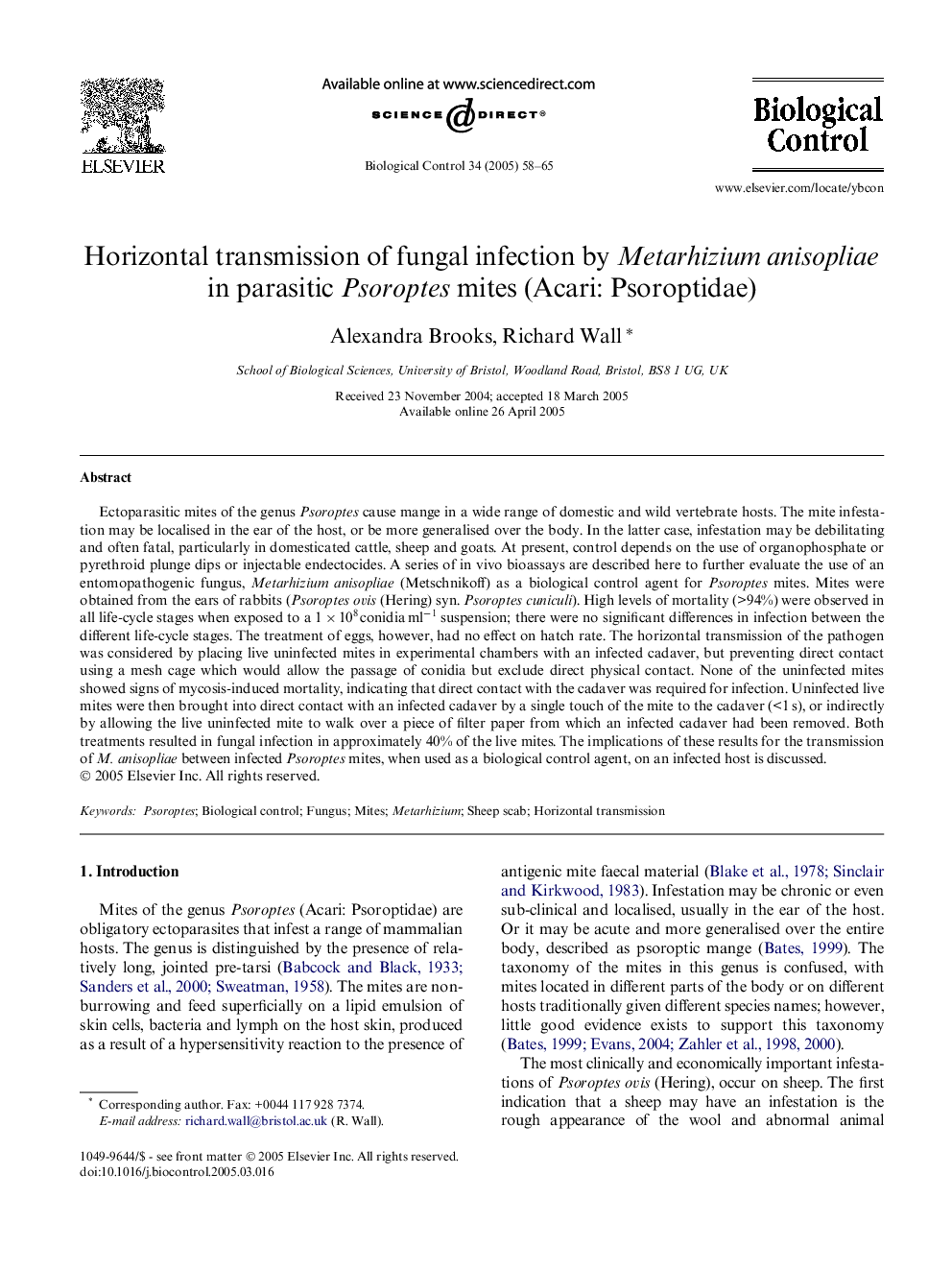| Article ID | Journal | Published Year | Pages | File Type |
|---|---|---|---|---|
| 9471929 | Biological Control | 2005 | 8 Pages |
Abstract
Ectoparasitic mites of the genus Psoroptes cause mange in a wide range of domestic and wild vertebrate hosts. The mite infestation may be localised in the ear of the host, or be more generalised over the body. In the latter case, infestation may be debilitating and often fatal, particularly in domesticated cattle, sheep and goats. At present, control depends on the use of organophosphate or pyrethroid plunge dips or injectable endectocides. A series of in vivo bioassays are described here to further evaluate the use of an entomopathogenic fungus, Metarhizium anisopliae (Metschnikoff) as a biological control agent for Psoroptes mites. Mites were obtained from the ears of rabbits (Psoroptes ovis (Hering) syn. Psoroptes cuniculi). High levels of mortality (>94%) were observed in all life-cycle stages when exposed to a 1 Ã 108 conidia mlâ1 suspension; there were no significant differences in infection between the different life-cycle stages. The treatment of eggs, however, had no effect on hatch rate. The horizontal transmission of the pathogen was considered by placing live uninfected mites in experimental chambers with an infected cadaver, but preventing direct contact using a mesh cage which would allow the passage of conidia but exclude direct physical contact. None of the uninfected mites showed signs of mycosis-induced mortality, indicating that direct contact with the cadaver was required for infection. Uninfected live mites were then brought into direct contact with an infected cadaver by a single touch of the mite to the cadaver (<1 s), or indirectly by allowing the live uninfected mite to walk over a piece of filter paper from which an infected cadaver had been removed. Both treatments resulted in fungal infection in approximately 40% of the live mites. The implications of these results for the transmission of M. anisopliae between infected Psoroptes mites, when used as a biological control agent, on an infected host is discussed.
Related Topics
Life Sciences
Agricultural and Biological Sciences
Agronomy and Crop Science
Authors
Alexandra Brooks, Richard Wall,
